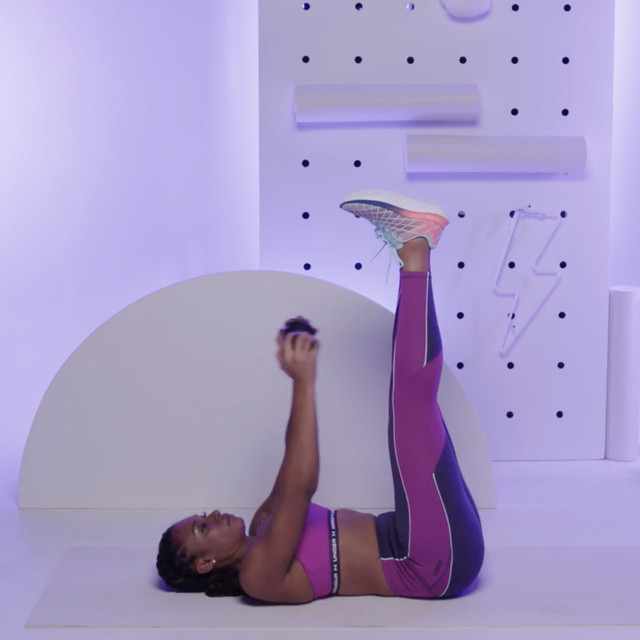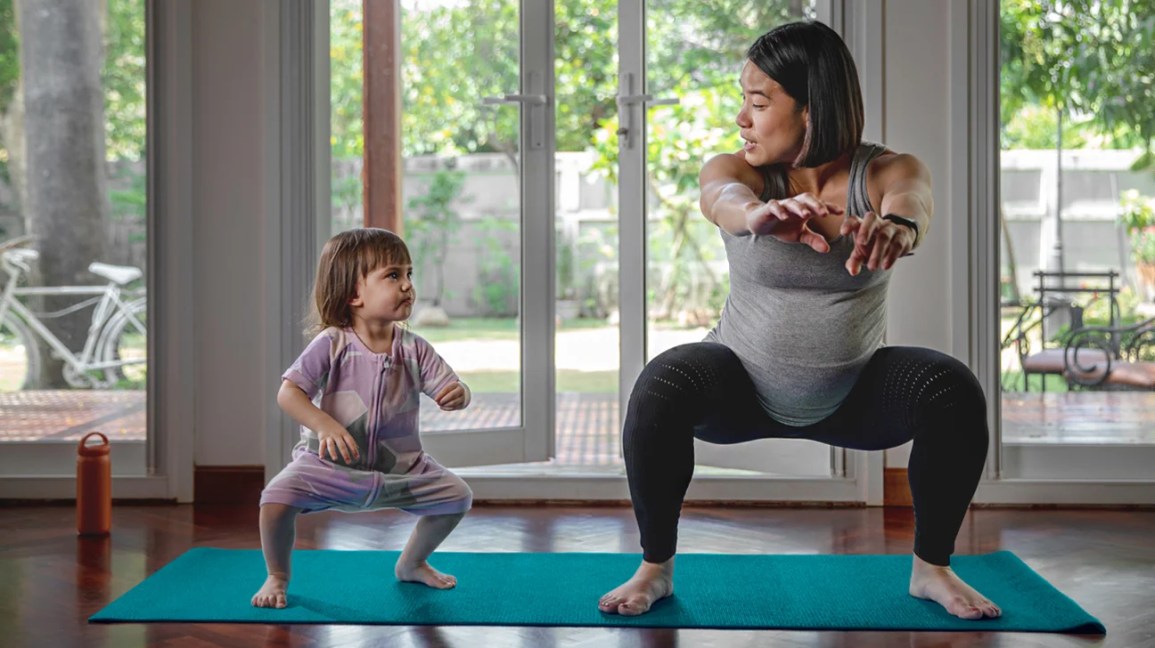Warm-up exercises are key to preparing your body for physical activity. They help prevent injuries and enhance performance.
Starting a workout session without the right preparation can lead to muscle strains and soreness. Warm-up exercises are the body’s natural way to transition from rest to high-energy activity. These pre-workout rituals increase blood flow, improve flexibility, and mentally prepare you for the workout ahead.
Engaging in a proper warm-up routine raises your heart rate gradually, primes your muscles for exertion, and helps to prevent injuries. A tailored warm-up not only adjusts your body temperature and loosens joints but also sets the stage for a more effective, injury-free workout experience. With a focus on dynamic stretches and light cardiovascular movements, you’ll find that a thorough warm-up can significantly improve your overall exercise performance and enjoyment.

Credit: www.amazon.com
Warming Up: Why It’s Non-negotiable
Think of warming up as the prelude to your workout symphony. It’s essential and sets the tone for your whole session. Skipping it isn’t an option if you want to thrive and avoid injury. Let’s dive into why warming up cannot be overlooked and how it primes your body for peak performance.
The Science Behind Warming Up
Warming up goes beyond just shaking off the stiffness. Your body undergoes real, beneficial changes when you warm up properly. These changes include:
- Increased muscle temperature, which improves elasticity and efficiency.
- Better joint mobility as synovial fluid lubricates the joints.
- Elevated heart rate gently, prepping your cardiovascular system.
- Sharpened mental focus to tackle your workout head-on.
Risks Of Skipping The Warm-up
Jumping into intense exercise cold is a gamble with your well-being. The risks are too high to ignore. Here’s what might happen:
| Risk | Consequence |
|---|---|
| Strained muscles | It can sideline you for weeks. |
| Joint injury | Damage that may need a long recovery. |
| Poor performance | Your session won’t be as effective. |
| Cardiac stress | Unnecessary strain on your heart. |
Every workout must begin with a warm-up to prevent these risks. Your body and performance depend on it.
Key Components Of An Effective Warm-up
A proper warm-up sets the tone for an excellent workout session. It prepares your body and mind for the physical activity to follow. To maximize performance and prevent injury, focus on these key elements during your pre-exercise routine.
Elevating Your Heart Rate
Kick start your warm-up by getting your heart pumping. It increases blood flow, slowly rises your body temperature, and preps your cardiovascular system. Try these simple activities to raise your heart rate:
- Jogging in place
- Jumping jacks
- Brisk walking
Activating Prime Muscle Groups
Awaken your muscles by engaging key areas you’ll use during your main workout. Target major muscle groups for a thorough warm-up. Examples include:
| Upper Body | Lower Body | Core |
|---|---|---|
| Arm circles | Squats | Planks |
| Pull-aparts | Lunges | Leg raises |
Remember to move gently at first. Gradually progress to more dynamic stretches. This sparks neural connections and enhances flexibility.
Dynamic Moves To Kickstart Your Routine
Before you dive into your workout, it’s crucial to warm up your muscles. Dynamic exercises ease your body into motion. They increase blood flow, loosen joints, and prime your muscles for the activity ahead. Let’s explore some essential warm-up moves that will prepare your body for any intense workout or active day.
Arm Circles And Swings: Engage Your Upper Body
Arm circles and swings are simple yet effective. They activate your shoulders, neck, and upper back. Start with your arms by your sides, then swing them in big circles. Gradually make the circles bigger to increase your range of motion.
- Small circles: Begin with arm circles that are small and controlled.
- Medium circles: Increase the size for medium intensity.
- Large circles: Swing your arms in large circles for full engagement.
Move on to arm swings. Cross your arms in front of your chest, then open wide as if hugging a big tree. This move stretches and warms up your chest and back muscles.
Leg Swings And Lunges: Prepare Your Lower Body
Leg swings and lunges target your lower body. They get your hips, thighs, and legs ready for a workout. Begin with leg swings. Hold onto a stable surface for balance, and gently swing one leg forward and backward.
| Exercise | Benefits |
|---|---|
| Forward leg swings | Loosens hip flexors and hamstrings |
| Side-to-side leg swings | Activates inner and outer thighs |
Continue with lunges. Step forward into a lunge, lowering your hips until both knees are bent at a 90-degree angle. Ensure your front knee is directly above your ankle. Lunges improve stability and flexibility.
- Static lunges: Hold a lunge position for a count.
- Walking lunges: Move forward, alternating legs.
Dynamic warm-up exercises form the cornerstone of any effective workout routine. By incorporating arm circles, swings, leg swings, and lunges, you wake up your muscles. You also prep your body for peak performance. Now, let’s turn up the heat and start the workout right!
Sport-specific Warm-ups For Enhanced Performance
Before diving into intense activity, it’s crucial to prep your body. Doing sport-specific warm-ups can boost your performance and reduce the risk of injury. Whether you’re a runner or you lift weights, the right set of exercises gears up your muscles and your mind. Let’s explore how tailored warm-ups can elevate your game to the next level.
Running And Cardio Exercises
Cardio workouts are demanding. Your body needs a kickstart to handle the stress. A focused warm-up routine is your best bet for a safe and effective cardio session. Here is a step-by-step plan:
- Start slow: Begin with a gentle jog or a brisk walk for about 5 minutes.
- Dynamic stretches: Include high knees, leg swings, and arm circles for 5-10 minutes.
- Gradually increase intensity: Move to a moderate pace until your body feels ready for full effort.
All these steps are easy to follow and prepare you for any running or cardio challenge.
Strength Training Preparations
Before lifting, warm-ups are essential. They alert the nervous system and bring blood to muscles. Follow this brief guide:
- Dynamic movements: Start with arm crosses or walking lunges to energize the muscles you’ll use.
- Lighter sets: Do a few sets of your planned exercise with lower weights before the main routine.
- Focus on form: Make sure each movement is crisp and proper to set the pattern for heavier loads.
Warm muscles lead to better performance and fewer injuries, making these steps indispensable for strength trainers.
Mindful Breathing And Mental Preparation
Before we jump into physical warm-up exercises, let’s start with the foundation: mindful breathing and mental preparation. This stage sets the tone for your workout. It helps to align your mind and body. These techniques can enhance focus, reduce stress, and improve performance.
The Role Of Breathwork In Exercise
Breathwork is the engine behind every movement you make. It enriches your blood with oxygen. This fuels your muscles during exercise. Proper breathing can also calm your mind. This helps you concentrate better.
- Breathe deeply from your diaphragm, not just your chest.
- Inhale through your nose to warm and filter the air.
- Exhale through your mouth to release fully.
Visualisation Techniques For Focus And Clarity
Visualisation is a powerful tool. It prepares your mind for the challenges ahead. Picture yourself completing your workout successfully. See every step in your mind’s eye.
- Find a quiet space.
- Close your eyes and take a few deep breaths.
- Visualize your exercise routine step by step.
- End with a mental image of achieving your fitness goals.

Credit: www.vitalproteins.com
Cool Down: Completing The Cycle
A well-executed cool down session is as crucial as the workout itself. It gradually lowers heart rate and calms the muscles. Let’s dive into the best practices to ensure your body gets the closure it needs.
Stretching: Essential Yet Often Overlooked
Stretching helps prevent stiffness and improves flexibility, which can decrease the risk of injury. Incorporate these simple stretches at the end of your routine:
- Hamstring stretch: Sit down, extend one leg, and reach towards your toes.
- Quad stretch: Stand up, bend one leg back, and hold your ankle.
- Shoulder stretch: Bring one arm across your body and hold it with the other.
Spend at least 5-10 minutes stretching for optimal benefits.
Recovery: Bridging The Gap To Next Workout
Proper recovery includes replenishing fluids, eating nourishing foods, and getting enough rest. Here’s a simple recovery checklist:
| Activity | Description |
|---|---|
| Hydration | Drink water or a sports drink to replace fluids. |
| Nutrition | Eat a balanced meal with carbohydrates and proteins. |
| Rest | Ensure 7-9 hours of sleep to aid muscle recovery. |
Embrace these steps to ensure you’re ready for your next workout. An effective cool down sets the stage for continuous progress and lesser soreness!

Credit: outperformsports.com
Frequently Asked Questions On The Ultimate Guide To Warm Up Exercises
What Is The Best Warm-up Routine?
The best warm-up routine combines dynamic stretches with light cardio. Aim to target major muscle groups. Gradually increase intensity to prep your body for the workout.
What Are The Guidelines For Warm-up Exercise?
Start with light cardiovascular activity to increase heart rate. Gradually progress to dynamic stretches, focusing on major muscle groups. Keep movements controlled and in line with your exercise routine. Aim for 5 to 10 minutes, listening to your body to prevent strain or injury.
Stay hydrated throughout the warm-up.
What Is The Most Appropriate Exercise For A Warm-up?
Dynamic stretching exercises are ideal for warm-ups, as they prepare muscles and joints for physical activity. Examples include leg swings, arm circles, and lunges.
Is A 30 Minute Warm-up Too Long?
A 30-minute warm-up may be excessive for most people. Generally, a warm-up should last between 5 to 15 minutes, focusing on preparing the body for the specific activity ahead.
Conclusion
Embracing the right warm-up exercises sets the stage for your workout success. With the techniques outlined, you’re now equipped to ignite your muscles and enhance flexibility. For injury prevention and optimal performance, integrate these stretches and movements into your routine.
Commit to this guide’s steps, and feel the difference in every activity. Stay safe and empowered on your fitness journey!

